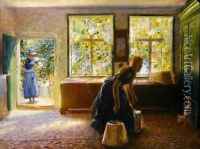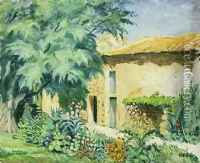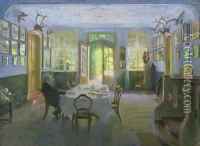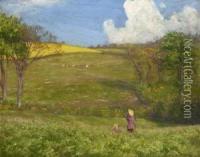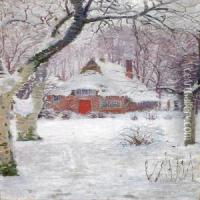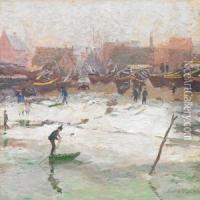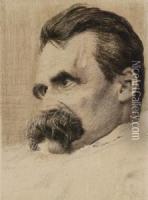Hans Olde Paintings
Hans Olde was a significant German painter and printmaker, born on December 18, 1855, in Husum, then part of the Duchy of Schleswig. His contributions to art are often associated with the Symbolist movement and early expressions of Modernism in Germany. Olde's artistic journey reflects a transition from traditional academic painting to more expressive forms that prefigure elements of Expressionism.
Olde began his artistic education in Munich, a major center for art in Germany, where he was initially influenced by the prevailing academic styles. However, his artistic direction underwent a significant transformation after he traveled to Paris. It was there he encountered the works of the Impressionists, whose emphasis on light and color over form had a profound impact on his development as an artist. This exposure led him to explore more progressive and expressive techniques in his own work.
In the late 19th century, Olde became associated with the Berlin Secession, a group of artists who rebelled against the conservative norms of the art establishment. Within this context, Olde's work became more experimental, incorporating elements of Symbolism and early Modernist tendencies. His subjects often included landscapes, portraits, and figure studies, characterized by a dynamic and somewhat emotive application of paint.
Olde's influence extended beyond his own practice through his role as a teacher and mentor to younger artists. In 1898, he was appointed as the director of the Weimar Saxon-Grand Ducal Art School, a position through which he had a significant impact on the development of German art. He advocated for a modern curriculum that embraced the avant-garde movements of the time, thereby influencing a generation of artists who would go on to define German Expressionism.
Hans Olde died on July 27, 1917, in Kiel, Germany. Despite his death, his legacy lived on through his contributions to the development of modern art in Germany and his influence on future generations of artists. His work is now recognized for its role in the transitional period of German art, bridging the gap between the academic traditions of the 19th century and the emergence of modern artistic expressions in the 20th century.
